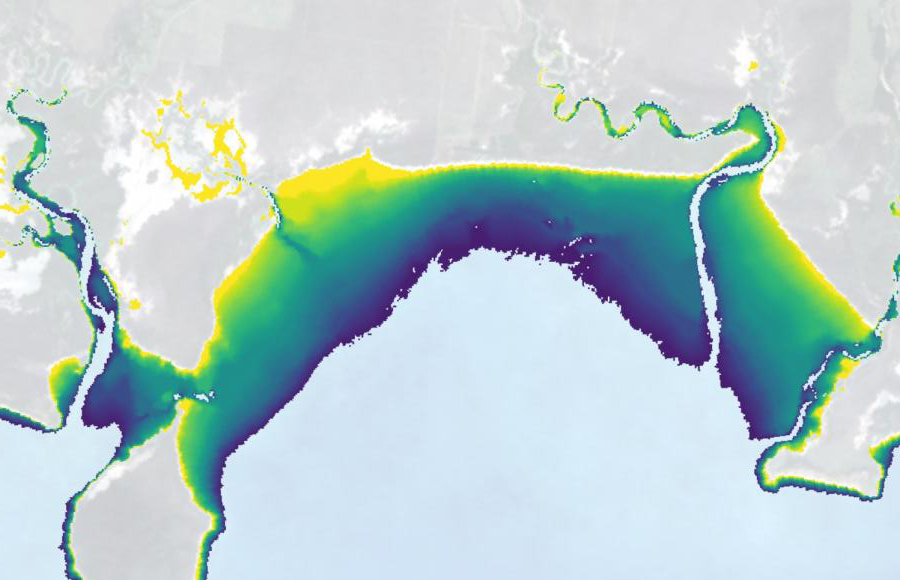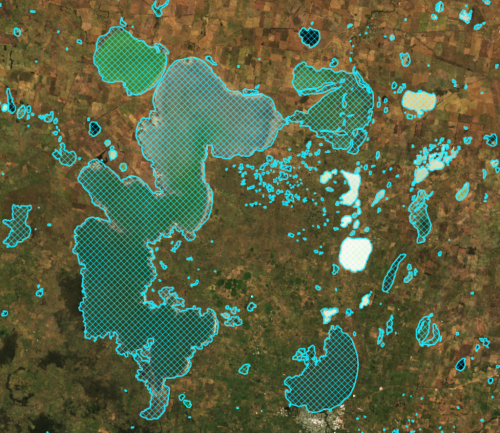News We’re helping map the Reef
DEA satellite data helps reveal the Great Barrier Reef’s sea floor in never-before-seen detail.
Page last updated:18 June 2024
Thanks to a collaborative project between James Cook University, Geoscience Australia, and the Australian Hydrographic Service, the seafloor of the entire Great Barrier Reef is now mapped in high resolution.
The mapping project called upon the Digital Earth Australia (DEA) Intertidal Elevation product to fill an important data gap along Australia’s vast intertidal zone.
“The Great Barrier Reef data is the first in a series of ‘30-metre’ datasets that will be released as part of this project,” says Dr Robin Beaman from James Cook University, who initiated the project in 2009. “This represents the highest resolution depth model of the Great Barrier Reef to date.”
“Along with the quality of the new data we’ve acquired, we’ve also been able to access undersea mapping data collected over the past few decades by government and university research programs.”
“Our partners at Geoscience Australia will be releasing open source data of large parts of the coastline as it becomes available. The depth models we’ve built will enhance our understanding of the terrain of the seafloor in shallow waters off the coast of northern Australia.”
Chief of Geoscience Australia's Environmental Geoscience Division, Dr Stuart Minchin, says he is pleased his team was able to get onboard and support this important project with such wide-ranging potential.
“The dataset we’ve released today maps the entire Great Barrier Reef with data that is around eight times higher resolution than what was available previously. This is a vast improvement and it creates huge opportunities for the scientific and policy community, most importantly for the environmental management of the reef,” he says.
“Having greater knowledge of the shape of the reef will be a critical tool for the government agencies responsible for its protection. This gives those organisations a far more detailed view of the reef with which they can identify new reef structures and coral formations.
“We’ve been able to support the team at JCU, who are specialists in this kind of marine research, by contributing our resources and expertise to the project. We’ve also worked with the Australian Hydrographic Service to bring their vast stores of marine mapping data into the project as well.”
The series of datasets produced through this project will provide a detailed view of the marine geography of Australia’s northern coastline, providing greater certainty on the location and extent of the country’s maritime boundaries. The datasets will support safety of life at sea, the enforcement of law, and government operations.








